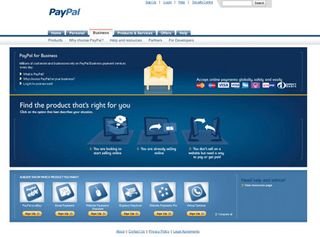Easy ways to take payments via your site
The world of payment providers explained
Design
If you have a beautiful ecommerce experience connected to an ugly payment process branded solely and heavily with "Payments R Us", you'll be reducing your conversion rates. The benefits of transacting in a secure and obviously payment focused environment are undermined by the jarring and often concerning feeling of moving to an alien environment.
It's worth checking how much you can customise the payment provider's interaction with your customer. It might simply be a case of adding your logo or CSS to improve the look of their pages; changing labels on buttons and copy in receipt emails; or being able to determine the eventual redirection out of their payment process back to your site.
All these things help keep your customers happy – as businesses grow, the degree of customisation expected by customers seems to grow too. Some payment gateways offer an 'invisible' service whereby your site captures all the payment information and passes it to their servers. This sort of service can help raise conversion considerably, but it requires your site to be PCI-compliant.
Unless you're a medium to large retailer/online commercial outlet, it may well not be worth the added technical complexity. If you're a larger player, and have a willing technical partner and audit/security partner, however, it's well worth investigating.
Integration
Once you're happy with the cost of the provider and you've investigated how closely you can integrate the look of it into your site, you might want to consider how the provider can connect to other systems you're using.
Get daily insight, inspiration and deals in your inbox
Get the hottest deals available in your inbox plus news, reviews, opinion, analysis and more from the TechRadar team.
It's worth investigating how data is made available to you and what data you can access online.
Can you automatically send files to your fulfilment partner directly from the back office of the ecommerce solution, with a flag from the payment provider to show the authorised payment has been received? How can you process refunds or check receipt of the cash?
Find out if the services of interest to you have a direct connection to your choice of online shop, content management system or back office accounting package. The open source Drupal ecommerce module Ubercart integrates with many top-flight payment gateways straight out of the box, as do the hosted services like Shopify and Venda.
Some leading banks and gateways export data formatted ready to connect to Sage, SAP or Oracle, which can save extra integration work. Along with these considerations, there are ecommerce solutions with a .NET flavour to them such as Aivea and Volusion or Java-based delights such as ElasticPath, KonaKart and Avetti.
If development resources are limited within your company, it might be worth looking closely at services where more of the work is done for you. Working with established market leaders such as Venda enables you to draw on the learning they've gained by helping clients around the world.
Google has its own flavour of instant shop, the Google Checkout Store Gadget, which mirrors PayPal's version and shopping cart functionality, with hooks for stock management being kept in a simple Google Docs world.
For newbies wanting to test the waters, all services are simple and easy to get up and running. However, PayPal has considerably more brand reach at the moment compared to Google Checkout. It also offers both the option to take cash from PayPal accounts and to process credit and debit cards, which is a valuable edge for many smaller retailers.

SIMPLE AND EFFECTIVE: A PayPal account can be funded with a debit from a bank account or a credit card
Current page: Payment provider design and integration
Prev Page Online payment providers explained Next Page Combating online fraud